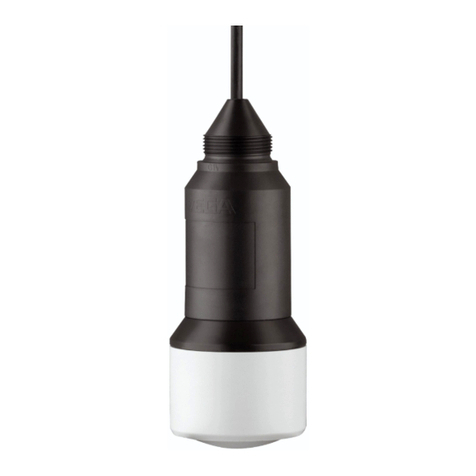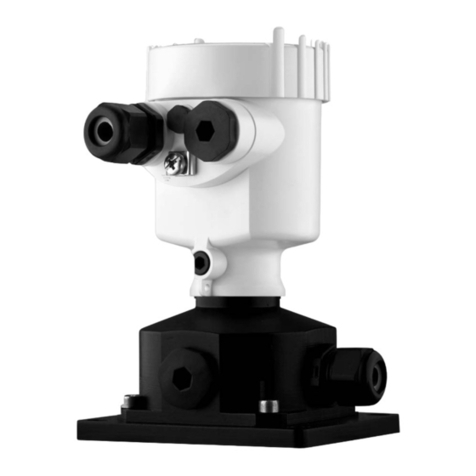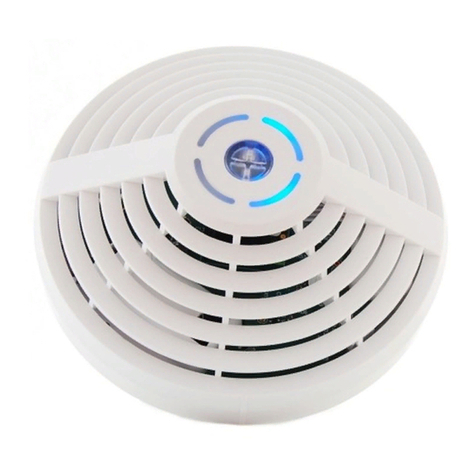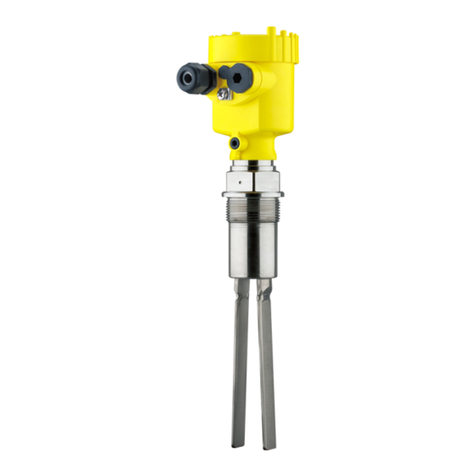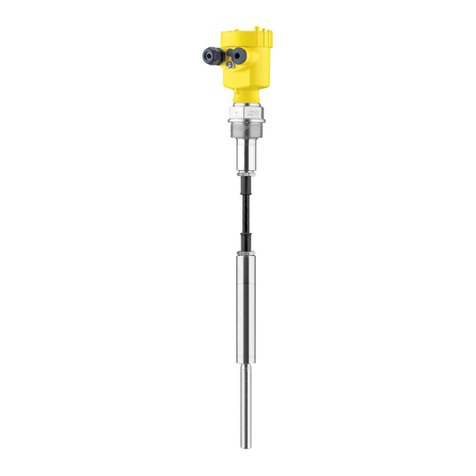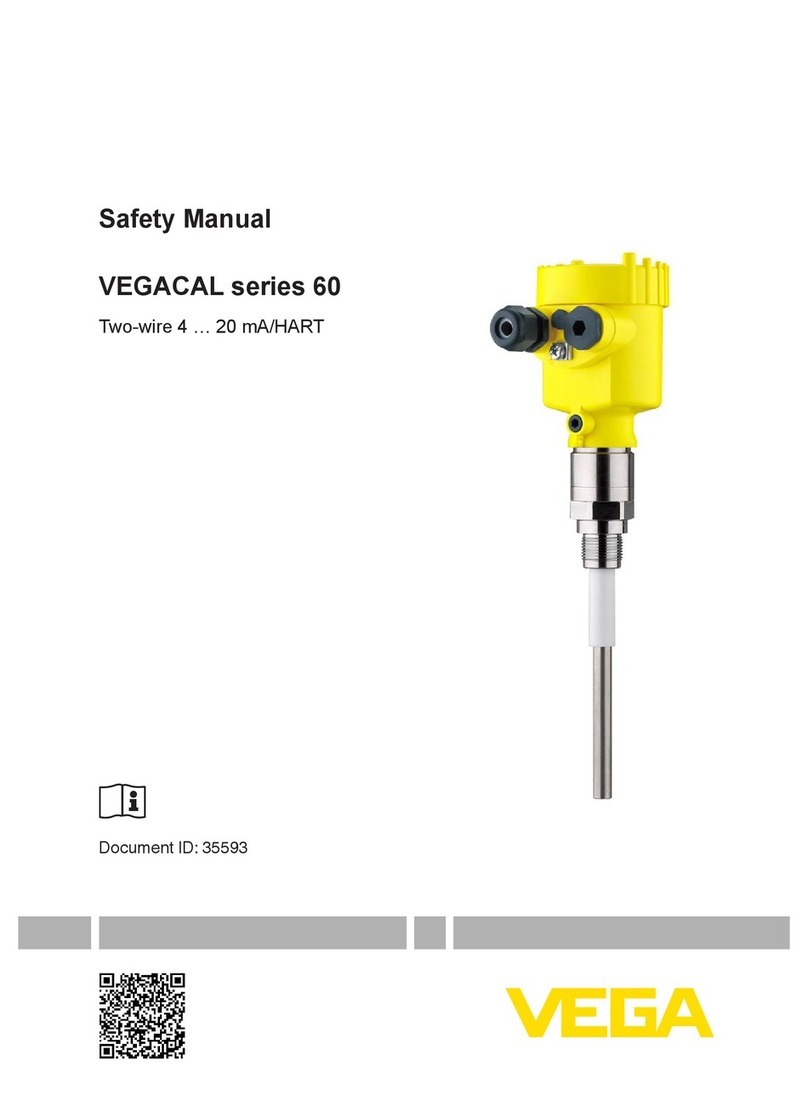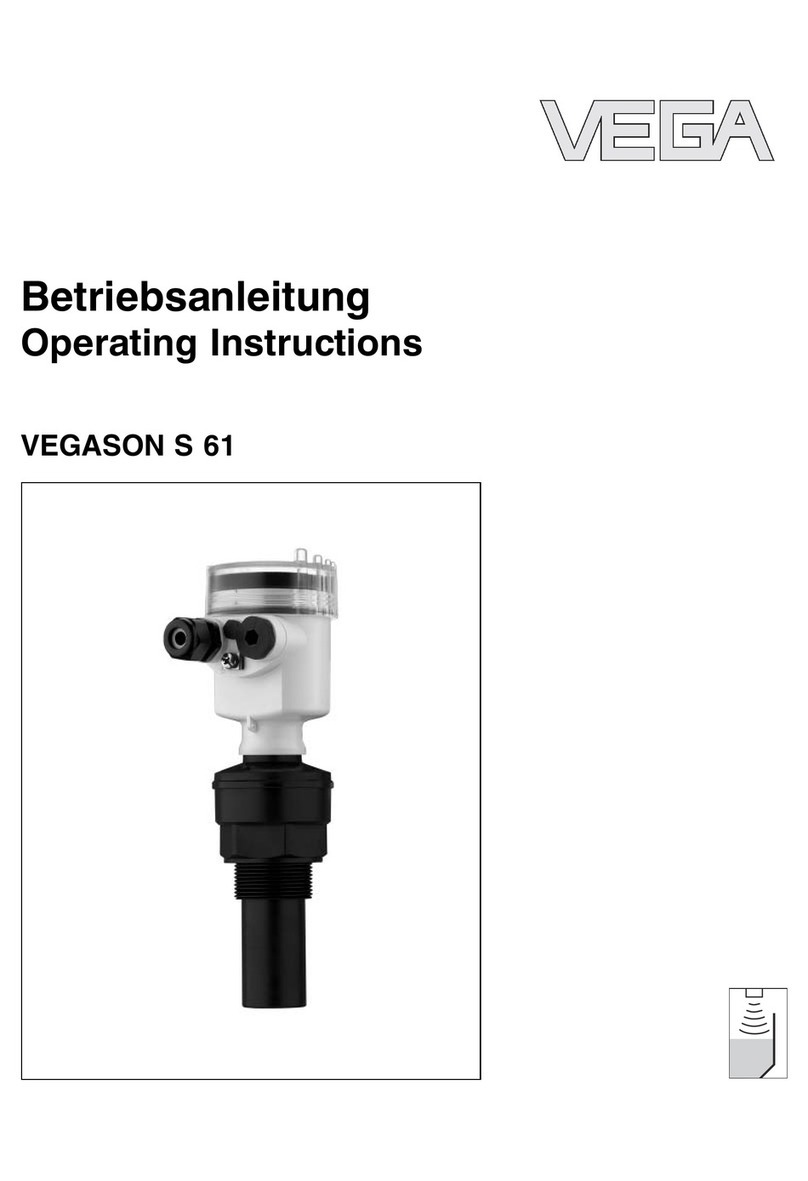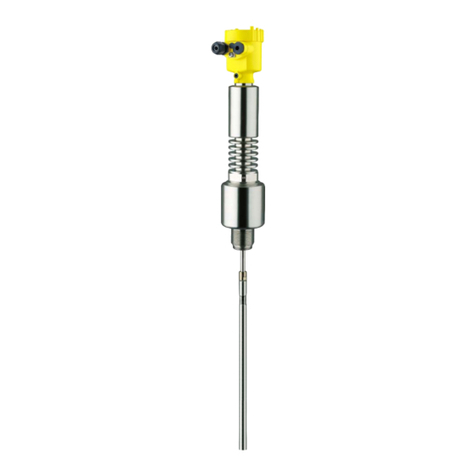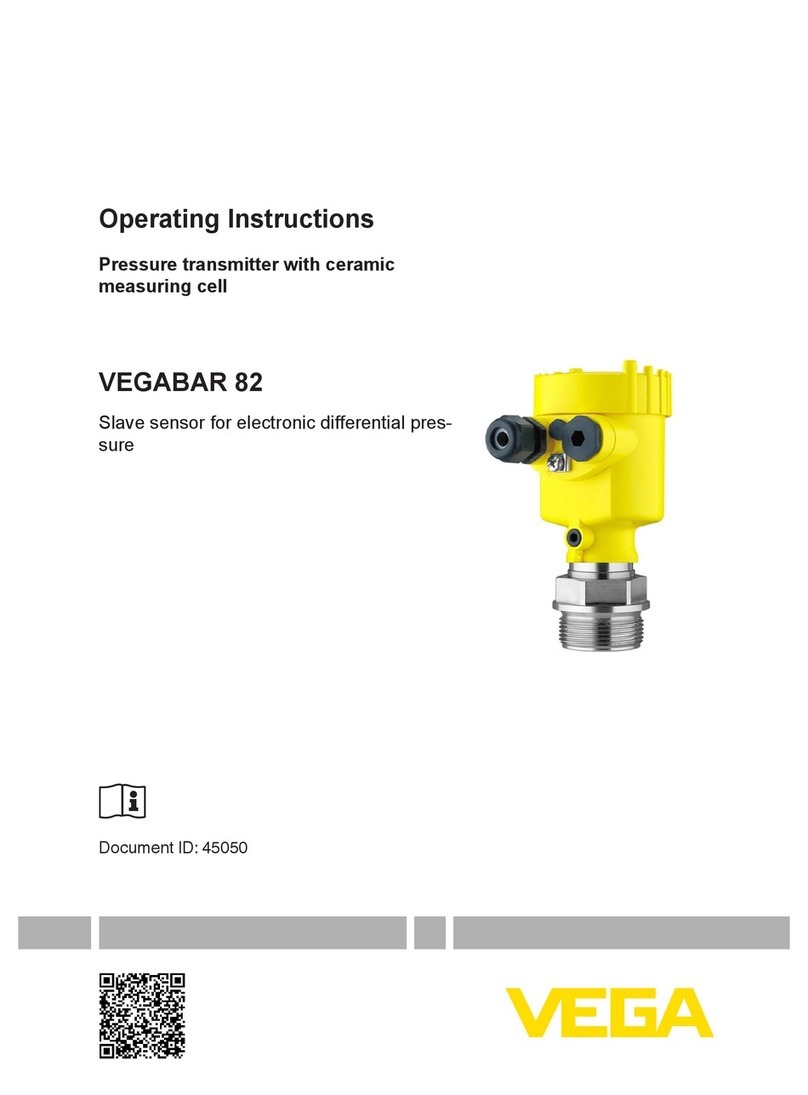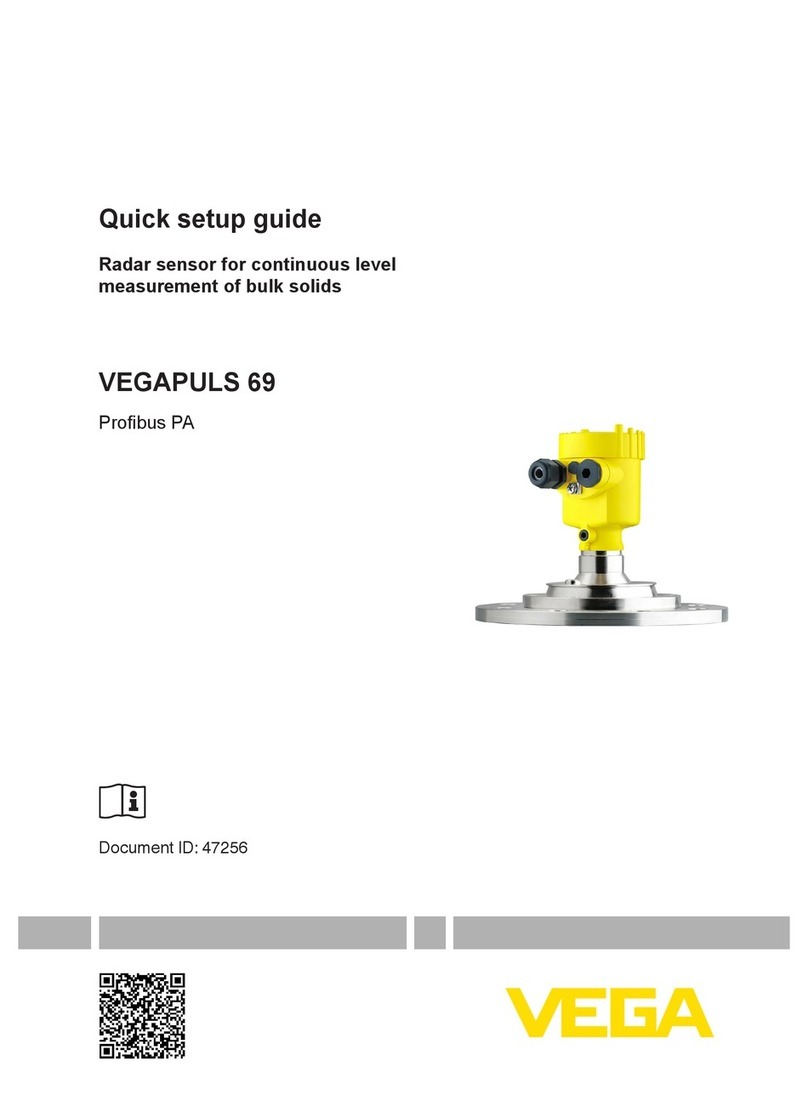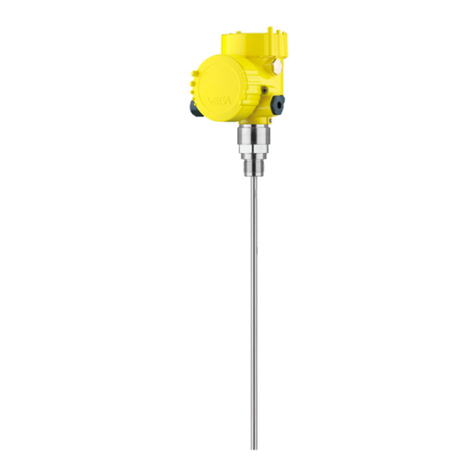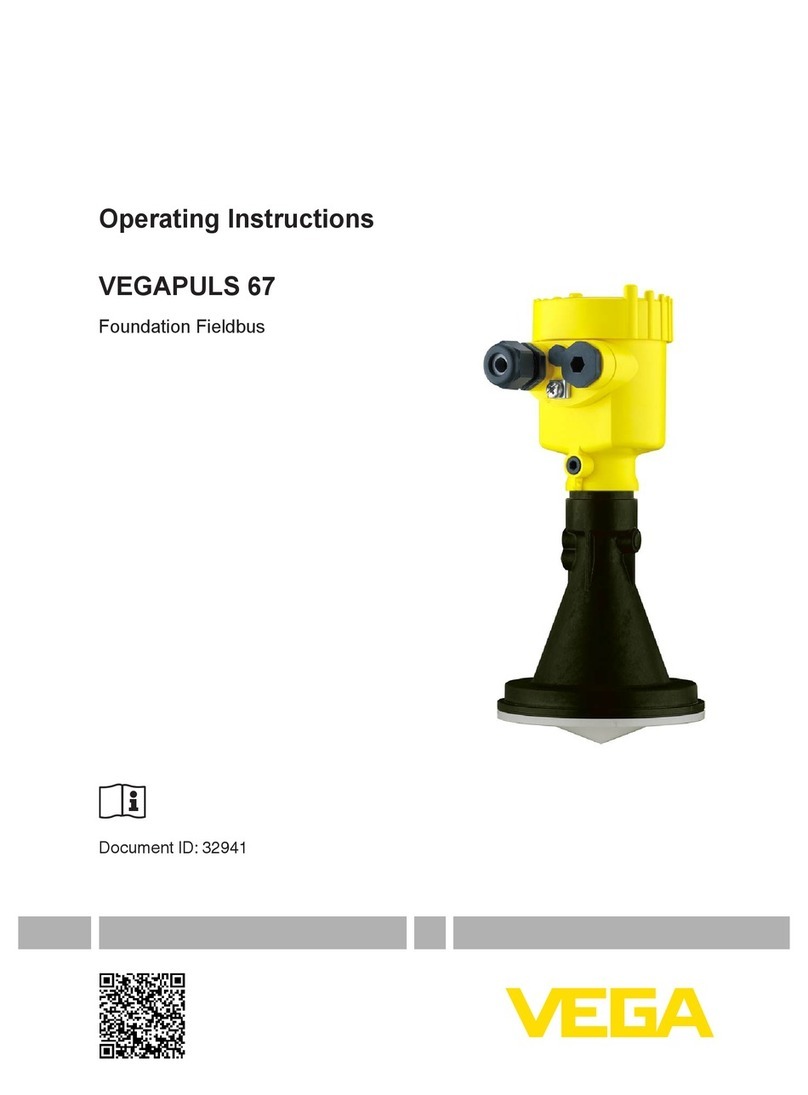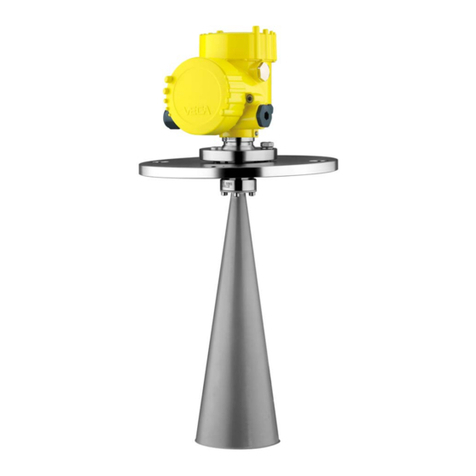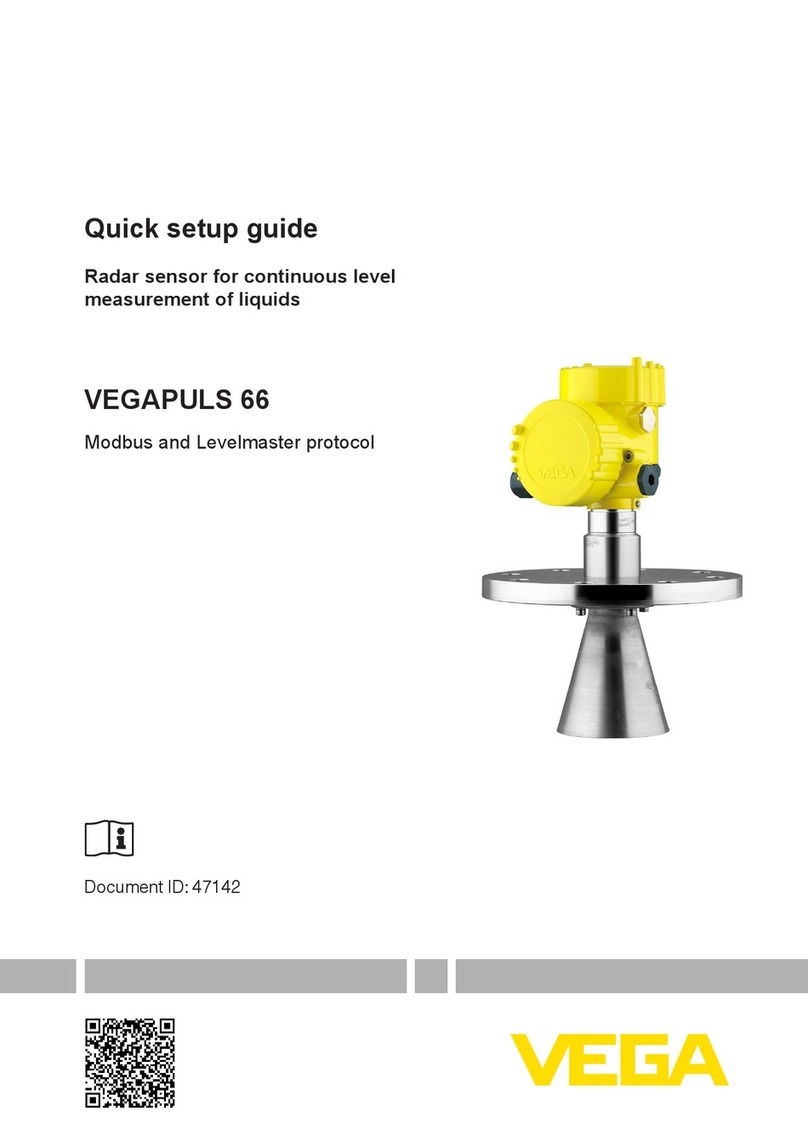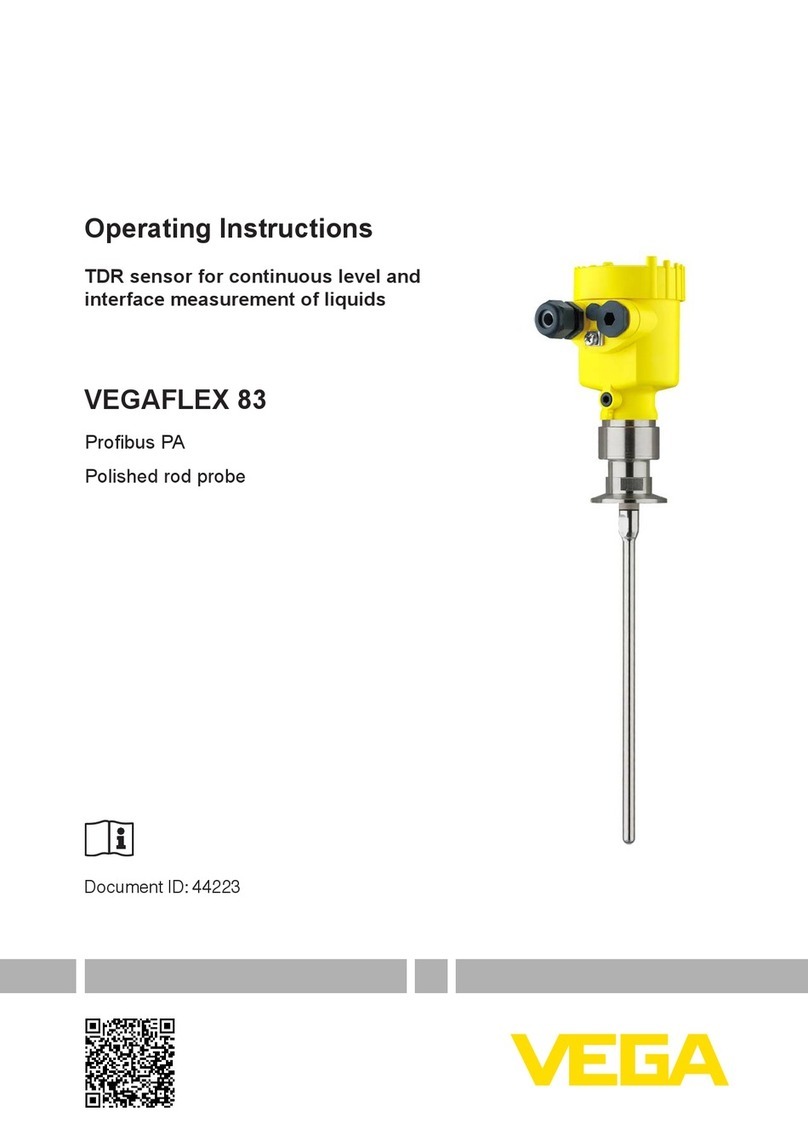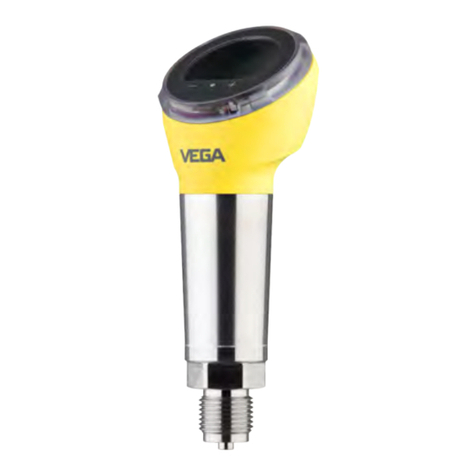2
Contents
VEGAFLEX 81 • 4 … 20 mA/HART - four-wire
42280-EN-160518
Contents
1 About this document
1.1 Function ........................................................................................................................... 4
1.2 Target group ..................................................................................................................... 4
1.3 Symbols used................................................................................................................... 4
2 For your safety
2.1 Authorised personnel ....................................................................................................... 5
2.2 Appropriate use................................................................................................................ 5
2.3 Warning about incorrect use............................................................................................. 5
2.4 General safety instructions............................................................................................... 5
2.5 CE conformity................................................................................................................... 5
2.6 NAMUR recommendations .............................................................................................. 6
2.7 Environmental instructions ............................................................................................... 6
3 Product description
3.1 Conguration.................................................................................................................... 7
3.2 Principle of operation........................................................................................................ 8
3.3 Packaging, transport and storage................................................................................... 11
3.4 Accessories and replacement parts ............................................................................... 11
4 Mounting
4.1 General instructions ....................................................................................................... 14
4.2 Mounting instructions ..................................................................................................... 15
5 Connecting to power supply
5.1 Preparing the connection ............................................................................................... 18
5.2 Connection..................................................................................................................... 19
5.3 Wiring plan, double chamber housing ............................................................................ 21
5.4 Double chamber housing with DISADAPT ..................................................................... 22
5.5 Supplementary electronics............................................................................................. 23
5.6 Switch-on phase............................................................................................................. 24
6 Set up with the display and adjustment module
6.1 Insert display and adjustment module............................................................................ 25
6.2 Adjustment system......................................................................................................... 26
6.3 Parameter adjustment - Quick setup .............................................................................. 28
6.4 Parameter adjustment - Extended adjustment................................................................ 28
6.5 Saving the parameter adjustment data........................................................................... 46
7 Setup with PACTware
7.1 Connect the PC.............................................................................................................. 47
7.2 Parameter adjustment with PACTware............................................................................ 48
7.3 Set up with the quick setup............................................................................................. 49
7.4 Saving the parameter adjustment data........................................................................... 51
8 Set up with other systems
8.1 DD adjustment programs ............................................................................................... 52
8.2 Field Communicator 375, 475 ........................................................................................ 52
9 Diagnostics and servicing
9.1 Maintenance .................................................................................................................. 53
9.2 Diagnosis memory ......................................................................................................... 53
9.3 Status messages............................................................................................................ 54
